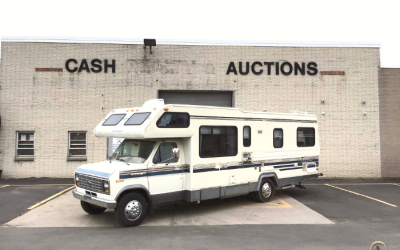This post was written by Emily Martin, Owner of Ally HR Partners LLC
Being an employer in today’s regulatory, economic, and social environment seems more difficult than ever.
Perhaps one of the industries impacted most by these factors recently is hospitality. In most jurisdictions, hospitality wages are still permitted to be supplemented by tips- whether as a portion of meeting the minimum wage requirement, or additional earnings on top of the minimum wage rate.
In ongoing efforts to equip employers with knowledge to help protect against increasing audits and claims, as well as maximize the return from best practices, we broke down five most-often unknown but very significant rules regarding tips and tipped wages.
1) Tipped Minimum Wage and Tip Credits are still a thing
At the Federal level, as well as in most states including New York, certain employers are still permitted to take a “tip credit” toward the minimum wage rate for those employees who worked in tipped positions. The allowed “tip credit” amount varies by the type of work the employee does, and a full break down of what’s allowed in 2022 can be found here.
As a simple example of how this works, in the WNY region, the minimum wage rate is currently $13.20/hr. Food Service employers are allowed to take a $4.40/hr tip credit for their tipped employees as part of meeting this minimum wage obligation, which means the employer can pay the employee $8.80/hr, as long as the employee makes at least an additional minimum $4.40/hr in the workweek to get the employee to the minimum wage requirement ($4.40 is the difference between $13.20 and $8.80/hr).
Taking the tip credit, especially against social and economic pressure for higher wages, has become a much less common practice, but is still allowed. As the minimum wage rate continues to increase each year, while other operational costs for the hospitality industry continue to squeeze already tight margins, employers should remember that this option exists. Especially as the amount of tips employees are receiving also seems to be at an all-time high, perhaps decreasing the need for a higher hourly rate with those tips as a substantial supplement.
Another thing to keep in mind? It is not necessary to take the complete tip credit. As minimum wage continues to increase, with a plan for $15/hr in this part of the state, employers can choose to take a partial tip credit as the new wage rate may become untenable, perhaps choosing to just credit one or two dollars per hour toward minimum wage at some point and not the full $4.40. The point is, employers have options, and if taking the tip credit means the difference between staying operational or closing your business or cutting staff, employers should keep this option in mind.
2) You are paying a fee to process credit card tips, and you’re allowed to recoup this (higher than ever) cost
While the amount of tips being given seems to be at an all-time high, there is no doubt that in the age of app ordering and electronic payments, the amount of those tips being processed by credit card vendors is also at its highest point. With the disappearance of cash, businesses are also paying more than ever in processing fees for transactions- and that includes fees on every tip that’s given.
In a high-volume hospitality operation, the dollar value of just tips being processed through a POS in a day, week, or year could add up to a significant amount, and if your business is paying a 3% fee to process the facilitation of those tips to your staff (which you are keeping 0% revenue from), you could be unknowingly and inadvertently burdening a significant additional operating cost all of the sudden. The good news? NYS and other employment law jurisdictions allow you to recoup this cost before distributing these amounts to your staff.
To illustrate how significant this could be, here’s an example from a real-life client we work with. In 2022, this client is on track to payout nearly $600,000 in just credit card tips for its employees. In this one year alone, with their average 3% processing fee for credit card transactions, this means they will be spending $18,000.00 for no reason other than to facilitate the payment of the tips to their staff. The company does not profit at all from these payments, and at a time where they also are paying significantly more in base wages, food costs, etc. By realizing and implementing a new practice to recoup this fee before tip distribution to employees, this business will now save a significant amount of money.
3) For Tip Pools, Managers and Supervisor CANNOT partake
In general, Managers and Supervisors who have the capability to hire and fire should not be participating in tip pools, or sharing in tips at all. This is made very clear through both Federal and State DOL laws and rulings. The only exception to this may be “working supervisors”, leads, or key carrying type staff who have some oversight or delegation responsibilities in the absence of management, but who otherwise have tipped-qualifying work (serving customers in some way) as a primary part of their responsibilities each day.
Certainly, if an employee is paid on a salaried basis and managing is the primary function of their role (even if they pitch in to serve at times), they should not be receiving any shared portion of tips in any formal or informal capacity. This can present a problem for employers when Managers count on this money to supplement their income, but employers should seek other options to supplement this employee pay like bonuses or pay increases to avoid compliance issues here.
Note, if a Manager works shifts at times which are strictly in a service role, separate from their manager position, they may keep those tips they received “directly from customers based on the service that he or she directly and solely provided”.
4) For Tip Pools, only those employees who regularly receive tips can share in the pool, if the tipped rate is paid
If you have a formal tip pool setup where you collect and distribute tips amongst employees based on hours worked, etc., be mindful that if you are paying any employees in that tip pool a tipped minimum wage rate (lower than the regular min wage rate of $13.20 currently), no non-tipped wage rate employees may be included in the pool. Where this could come into play is if you are paying wait staff at the tipped minimum wage and you want back-of-house employees (kitchen staff, dish washers, etc.) to share in the pool. In this case, those employees will not be able to share in the pool since they are likely not being paid (and can’t be paid) at the tipped-min rate. The only way to broaden the tip pool eligibility is to pay all employees included in the pool at least the standard minimum wage.
Note, if there is no formal tip pool setup and servers simply keep the tips they directly earn, those server employees may choose to voluntarily share their tips with back of house or other employees without issue.
5) Be aware of very specific rules about tipped and non-tipped worked for tipped-wage employees
If tipped wage employees are performing work during their shift that is not direct tipped-generating activity, employers may be required to pay the employee the regular minimum wage rate for that portion of their shift OR potentially their entire shift or week.
In NYS, there is a specific provision to the wage & hour law for tipped workers that says that if in any one shift an employee spends 20% or 2 hours (whichever is less) of their time performing non-tipped work, the employer will be required to pay the entire shift at the minimum wage rate, instead of the tipped minimum rate. The Federal government went slightly further this year, making permanent a rule that says that this 20% rule now applies to the entire workweek. So, if during any one workweek (not just day), an employee spends 20% or more of their scheduled time doing non-tipped work, the employee must then be paid minimum wage for all time worked in that week – even if entire shifts of the week were spent performing tipped work alone.
The Federal DOL also added an additional rule that affects single days and hours stating that, if within any one shift the employee is spending 30 or more minutes on non-tipped work, they need to be paid regular minimum wage for that time. This detail gets even more granular that the NYS rule stated above which is still in place. The federal DOL also goes onto say that any work that is not a part of the tipped occupation nor is not work that directly supports tip-producing activity (refilling salt and pepper shakers, rolling silverware, sweeping or vacuuming under tables, slicing fruit, fetching bar supplies, etc.), must always be paid at the minimum wage rate, regardless of the time spent doing it. Examples given for this work include preparing food, cleaning kitchens or bathrooms, etc.
So what’s the take-away in all this complication? If you’re committed to continuing to pay your tipped employees at the tipped rate, make sure to schedule them as tightly to service hours as possible, and minimize the amount of time and duration of time they are spending doing non-tipped and non-tip supporting work. This includes not having them help do things like wash dishes, or setup/breakdown dining rooms for events, etc. when other staff may have gone home or called in. Otherwise, you may need to track the work of tipped-wage employees on a much more granular level to avoid claims or negative audit results later.
The complexity of regulations developing each day in the landscape of Wage & Hour law is not slowing down. If you have concerns about compliance with the above, or any other area of payroll and time keeping practices, we encourage you to reach out for an evaluation.

This post was written by Emily Martin, Owner of Ally HR Partners LLC, a Buffalo-based HR consulting firm that helps small businesses identify and implement custom solutions to their people problems and opportunities. Often a business’ #1 expense, Ally HR Partners believes your people should be your #1 asset. Through an integrative partnership approach, Ally becomes your internal expert on all things HR including compliance assurance, performance management, and strategic HR initiatives designed to make the most out of your Human Capital. For more information about how Ally can work for you, visit AllyHRPartners.com
















